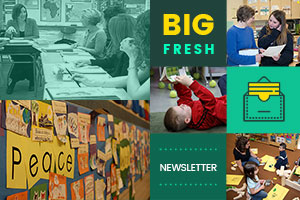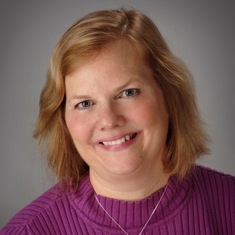The present moment represents all moments.
John Zeisel
It was a day my mother’s dementia was weighing heavily on me. Donna, a caregiver, must have seen it in my eyes. She joined me.
I said, “I don’t know how you do this job day in and day out. It is just so hard, so sad.”
Donna replied, “It depends on how you look at it.”
“It feels like I am saying goodbye to her every time I see her. It is like reliving her death, the death of the relationship I hold dear, every day. How else can I view it?” I asked.
“You can view it as saying goodbye each time, or you can view it as getting the rare opportunity to relive getting to know her for the first time again and again.”
The wisdom in these words is incredible to me. I now see my mother and her dementia in a new way. I am still sad, but my mother is just happy to meet me every day. She is not forgetting her daughter, she is just meeting a nice person who visits her. She is happily surprised to see me every day.
Hello or goodbye.
Forget or get to know.
Strength or weakness.
Shy or thoughtful.
Active or engaged.
Assertive or rude.
Helpful or overbearing.
Stressed or invigorated.
It is all about perspective. So many things are about perspective and how we choose to view them. We have the power to choose how we will view the world.
I had the privilege of seeing Lucy Calkins speak recently. She encouraged the entire audience to “hit the reset button” and remember that teaching is our life’s work. Her message, to me, was also about perspective. When we hit the reset button we can shift our perspective and author our own meaning. We may not have the power to change what is happening, but we do have the power to determine how we will interpret, respond to, and ultimately inspire those around us.
This week we look at student share sessions. Plus more as always — enjoy!
Clare Landrigan
Contributor, Choice Literacy
Clare Landrigan founded Teachers for Teachers with Tammy Mulligan. She spends her days helping educators from New England and beyond do the hard, thoughtful, and rewarding work of improving schools for young readers and writers. Clare blogs at Assessment in Perspective.
Free for All
[For sneak peeks at our upcoming features, quotes and extra links, follow Choice Literacy on Twitter: @ChoiceLiteracy or Facebook: http://www.facebook.com/ChoiceLiteracy or Pinterest: http://pinterest.com/choiceliteracy/]
Stella Villalba gives some practical tips for helping English language learners share and collaborate more with classmates during writing workshop. These strategies can work well with all young writers:
http://www.choiceliteracy.com/articles-detail-view.php?id=1314
Christy Rush-Levine has her middle school students try the innovative TED talk format to share their learning and develop oral language skills:
Cathy Mere reflects on how the work of teachers aligns closely with that of personal trainers:
http://reflectandrefine.blogspot.com/2014/12/teacher-as-personal-trainer.html
For Members Only
Ruth Ayres explains the value of A Variety of Share Sessions for writers of all ages:
http://www.choiceliteracy.com/articles-detail-view.php?id=2190
Melissa Kolb helps her preschoolers learn How to Speak “Friend” with books and minilessons:
Gigi McAllister uses Discussion and Summary as a Prelude to Fiction Writing with her fourth graders:
http://www.choiceliteracy.com/articles-detail-view.php?id=2175
In this week’s video, Katie DiCesare’s first graders discuss the characters they are studying in a whole-class share session:
http://www.choiceliteracy.com/articles-detail-view.php?id=1589
From Compliments to Naming the Craft is an encore video of a writing workshop share session from a fifth-grade classroom:
http://www.choiceliteracy.com/articles-detail-view.php?id=132
That’s all for this week!



